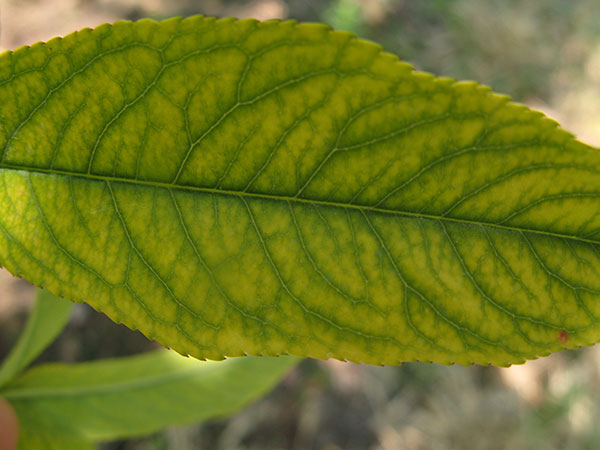Iron Chlorosis (Deficiency)
HOSTS
- Apple
- Berries
- Peach/Nectarine
- Plum
- Raspberry
DESCRIPTION
Iron deficiency is a common sight in Utah orchards, and an issue growers have to deal with every year. Iron deficiency is not caused by a lack of iron in the soil, but rather the soil pH (which ranges from 7.5 to 8.5). In high pH, iron is insoluble and immobile, and therefore not available for root absorption. Because irrigation water is also very alkaline, trying to manage iron deficiency by reducing soil pH is impossible. Iron deficiency is exacerbated by frequent springtime rains or prolonged soil wetness.
BIOLOGY
Iron is a nutrient necessary for the formation of chlorophyll. Lack of chlorophyll means reduced photosynthesis, and reduced tree vigor. Some trees are genetically more susceptible to nutrient deficiencies than others.
SYMPTOMS
- Yellow leaf tissue between veins (interveinal chlorosis)
- Veins remain green
- Most severe on newest growth
- Marginal leaf burning
GENERAL MANAGEMENT
To prevent or treat iron deficiency, chelated iron can be applied to the soil or foliage, but results are temporary. (Chelated products are readily available for absorption, and are not affected by soil pH.) Soil applications should be worked into the root zone. Foliar sprays (0.1%) with a spreader-sticker provide quick results but must be reapplied at approximately 10- to 21-day intervals. The drawback of foliar sprays is that staining of fruit can occur.
How to Spot and Treat Iron Chlorosis
How to Detect and Control Iron Deficiencies



